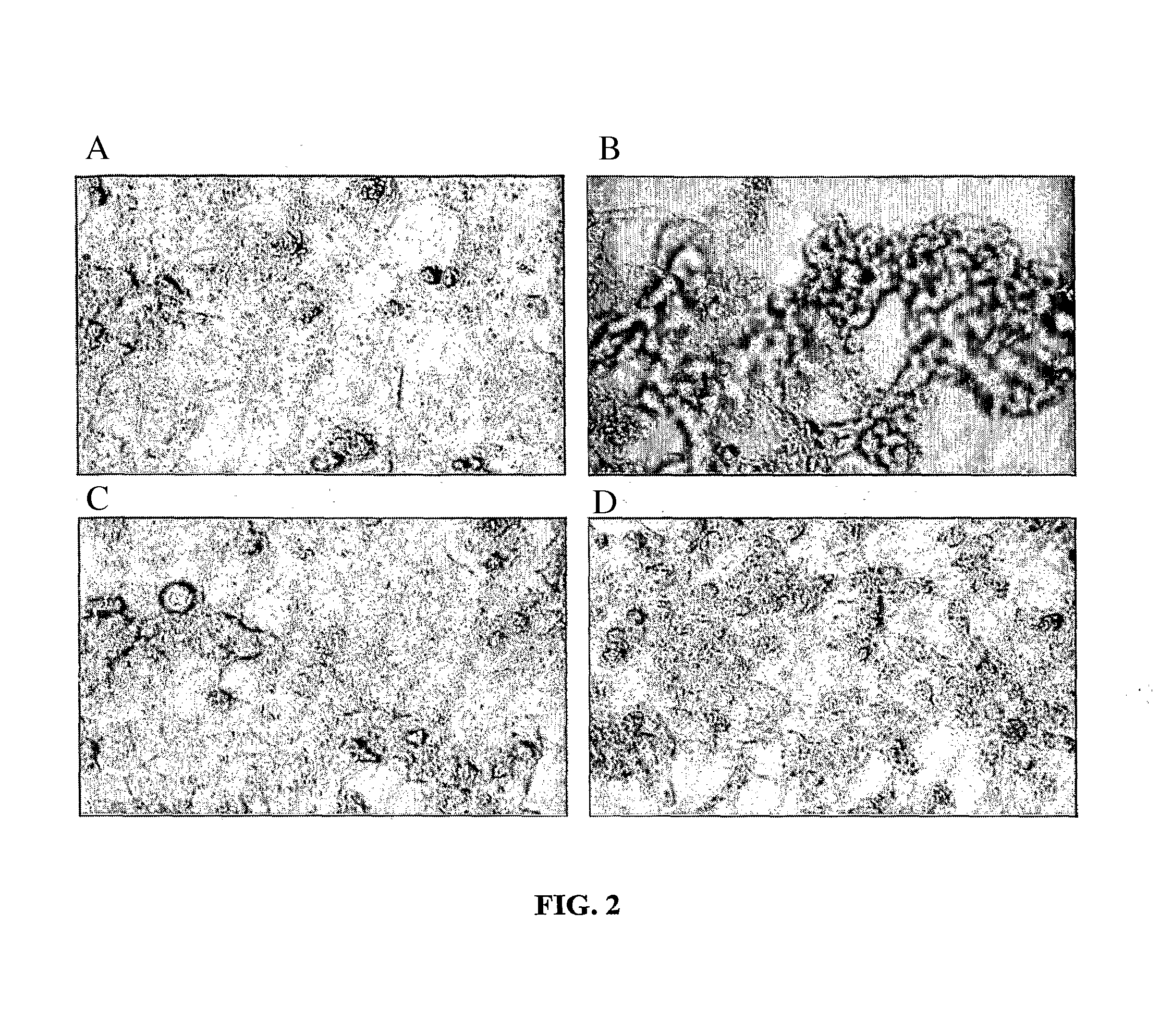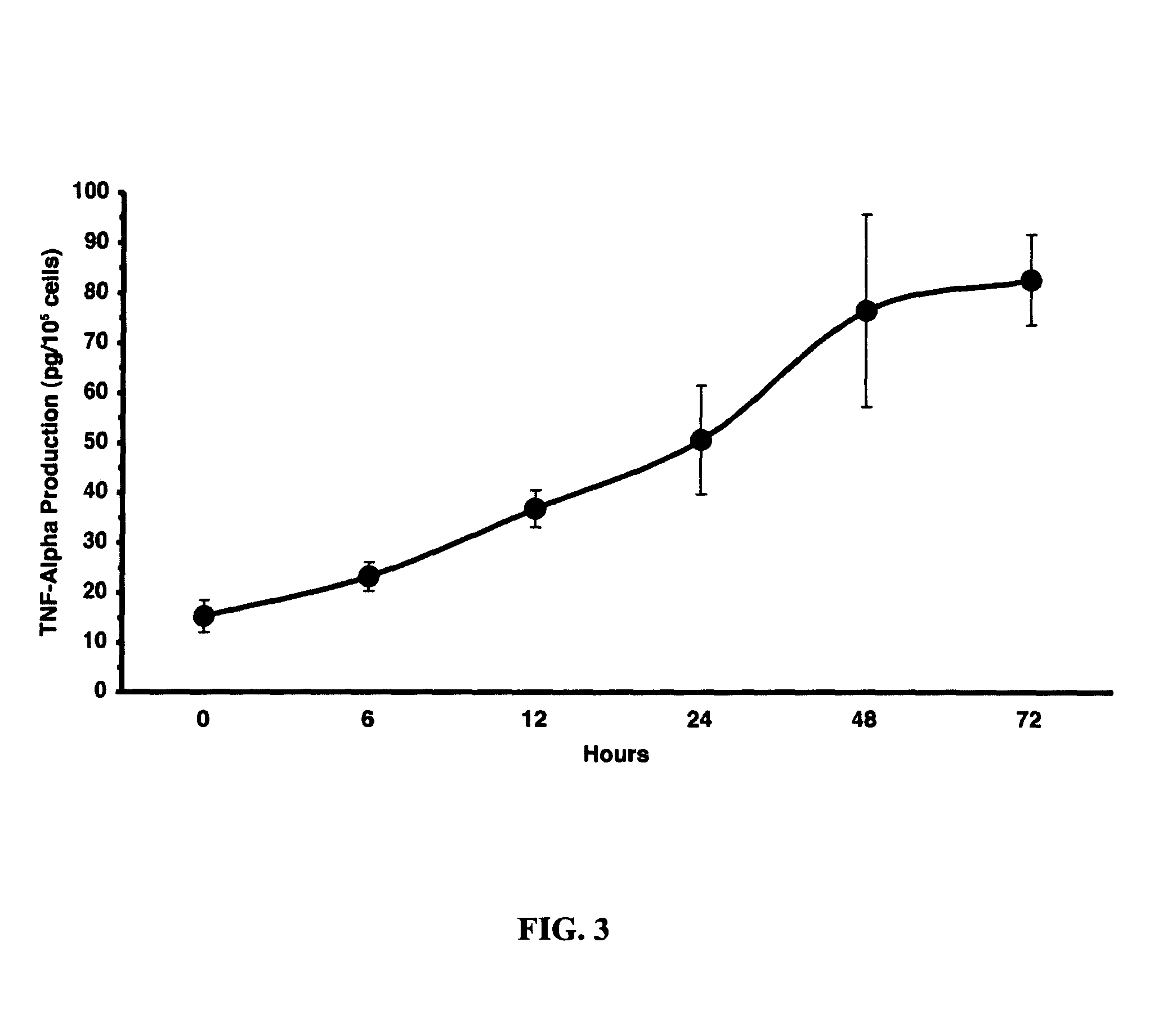Treatment of renal dysfunction and multiple myeloma using PACAP compounds
a technology of renal dysfunction and compound, applied in the field of treatment, management or prevention of renal dysfunction and/or multiple myeloma, can solve the problems of reduced renal cell survival rate, so as to achieve substantial protection and rescue, protect and/or rescue, and reduce the risk of adverse side effects
- Summary
- Abstract
- Description
- Claims
- Application Information
AI Technical Summary
Benefits of technology
Problems solved by technology
Method used
Image
Examples
example 1
[0244]Effect of Immunoglobulin Light Chains on Human Renal Tubule Cells
[0245]SV40-immortalized human renal proximal tubule cell cultures were incubated with immunoglobulin light chains (LC) at 50 μM for 3 days (FIG. 2). Proximal tubule cells exposed to LC demonstrated marked morphological changes including cell shrinkage, necrosis, and loss of cell-cell adhesion. PACAP38 alone, at 10−9 M, did not cause any alteration of cell morphology, but PACAP38 at 10−9 M prevented the LC-induced changes.
example 2
[0246]Effect of Immunoglobulin Light Chain on TNF-α Production by Human Renal Tubule Cells
[0247]Without wishing to be bound by theory, the LC-induced injury was hypothesized to be caused by production of proinflammatory cytokines such as interleukin 6 (IL6) and tumor necrosis factor-alpha (TNF-α). Indeed, addition of LC to a final concentration of 50 μM in human renal tubule cell cultures in vitro stimulated the time-dependent production of TNF-α, reaching a maximum level after 48 hours (FIG. 3). TNF-α concentrations were determined by ELISA.
example 3
[0248]Effect of PACAP38, Dexamethasone, and NFκB Inhibitors on Immunoglobulin Light Chain-Induced TNF-α Production by Human Renal Tubule Cells
[0249]Proinflammatory cytokine production induced by LC was hypothesized to be mediated via activation of an extracellular signal-regulated kinase (ERK)-type mitogen-activated protein kinase (MAPK) and / or nuclear factor kappa B (NFκB). Current treatments for suppression of LC-induced cytokine production include the steroid dexamethasone, and pyrrolidine dithiocarbamate (PDTC), an inhibitor of NFκB. Dexamethasone is also used to suppress myeloma tumor cell growth by stimulating apoptosis.
[0250]Varying doses of dexamethasone, PACAP38, MAPK kinase inhibitor (U0126), or PDTC were added to renal tubule cell cultures along with 50 μM LC to determine the effects on LC-induced TNF-α production, as measured by ELISA (FIG. 4). LC-stimulated production of TNF-α was suppressed by both dexamethasone and PACAP38 in a dose-dependent manner. The magnitude of ...
PUM
| Property | Measurement | Unit |
|---|---|---|
| particle size | aaaaa | aaaaa |
| particle size | aaaaa | aaaaa |
| particle size | aaaaa | aaaaa |
Abstract
Description
Claims
Application Information
 Login to View More
Login to View More - R&D
- Intellectual Property
- Life Sciences
- Materials
- Tech Scout
- Unparalleled Data Quality
- Higher Quality Content
- 60% Fewer Hallucinations
Browse by: Latest US Patents, China's latest patents, Technical Efficacy Thesaurus, Application Domain, Technology Topic, Popular Technical Reports.
© 2025 PatSnap. All rights reserved.Legal|Privacy policy|Modern Slavery Act Transparency Statement|Sitemap|About US| Contact US: help@patsnap.com



